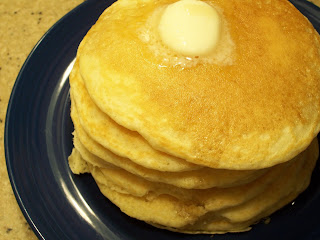General Cooking Tips
• Only fill the crock pot one half to two thirds full. The foods will not cook properly if the appliance is filled to the brim. If the food and liquid level is lower, the foods will cook too quickly.
• Foods cooked on the bottom of the slow cooker cook faster and will be moister because they are immersed in the simmering liquid.
• Remove skin from poultry, and trim excess fat from meats. Fatty foods will cook too quickly.
• You can thicken the juices and concentrate flavors by removing the lid and cooking on HIGH for the last half hour of cooking time.
• Most meats require 8 hours of cooking on LOW. Use cheaper cuts of meat - not only do you save money, but these meats work better in the slow cooker. Cheaper cuts of meat have less fat, which makes them more suited to crock pot cooking. Moist, long cooking times result in very tender meats.
• Follow the layering instructions carefully. Vegetables do not cook as quickly as meat, so they should be placed in the bottom of the appliance.
• Don't lift the lid to stir, especially if you are cooking on the low setting. Each time you lift the lid, enough heat will escape that the cooking time should be extended by 20 – 30 minutes. To check progress without lifting the lid, spin the cover until the condensation falls off. Then it's easy to see inside.
• Avoid placing the hot crock insert directly onto a very cold surface, such as your granite counter, or into the sink with cold water. The shock could make it crack.
Food Specific Cooking Tips
• For best results, ground meats must be cooked in a skillet before cooking in the crock pot.
• Seafood should be added during the last hour of cooking time, or it will overcook and have a rubbery texture.
• Large pieces of meat can be browned before cooking in the crock pot, but this step isn't necessary. Browning adds color and helps in flavor development.
• Cayenne pepper and Tabasco sauce tend to become bitter if cooked for long periods of time. Use small amounts and add toward the end of the cooking time.
• Add tender vegetables like tomatoes, mushrooms and zucchini during the last 45 minutes of cooking time so they don't overcook.
• Dairy products should be added during the last 30 minutes of cooking time, unless the recipes states otherwise.
• Liquids do not boil away in the crock pot, so if you are making a recipe that wasn't specifically developed for the crock pot, reduce the liquid by 1/3 to 1/2 unless you are cooking rice or making soup.
• Stir in spices for the last hour of cooking. They will lose flavor if cooked with the rest of the ingredients for the long cooking period.
Food Safety Tips
• 140 degrees F is the temperature the food needs to reach as quickly as possible. If you are at home during the cooking times, test the food temperature after four hours of cooking on LOW - the temp should be at least 140 degrees. If it isn't, there's a problem with your crock pot and you should get a new one.
• Some of the newer crock pots seem to cook at a hotter temperature, probably because manufacturers are concerned about food safety. You can check the temperature of your crock pot this way:
1. Place 2 quarts of water in your crock pot
2. Cover and heat on low for 8 hours
3. Lift the lid and immediately check the water temperature with an accurate thermometer. The temperature of the water should be 185 degrees Fahrenheit. If the temperature is higher foods may overcook and you should reduce the overall cooking time. If the temperature is lower your foods will probably not reach a safe temperature quickly enough, and the crock pot should be discarded.
• For food safety reasons, it's a good idea to cook on HIGH for the first hour to quickly bring the temperature up to 140 degrees. Then turn the dial to LOW and finish cooking.
• The LOW setting is about 200 degrees, and the HIGH setting is about 300 degrees. Note that both of these temps are well above the minimum safe temperature of 140 degrees.
• Experts recommend you do not put frozen foods in the crock pot. All foods should be defrosted before cooking so the food temperature can reach 140 degrees as soon as possible. However, since none of my family members are in a high-risk group, I often cook frozen foods in the crock pot. The informed choice is up to you.
• One hour on HIGH is equal to two hours on LOW.
• Remove cooked food from the crock pot or liner before you refrigerate the cooked food. Because the liner is made of such thick material, the food won't cool down quickly enough to prevent the growth of harmful bacteria.
Did you know. . .
• Studies have shown that the low, constant heat crock pots cook by may help prevent disease! Some compounds called "advanced glycation end products" are formed when sugars, fats, and proteins are heated at high temperatures, as when food is grilled, broiled, or microwaved. These AGE's irritate cells and may be a factor in the formation of heart disease, cancer, and diabetes. Since slow cookers only heat between 200 and 300 degrees, fewer of these compounds form in crock pot cooked meals, so slow-cooked meals are healthier.





















